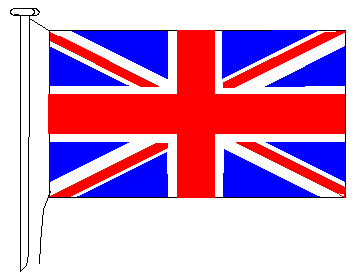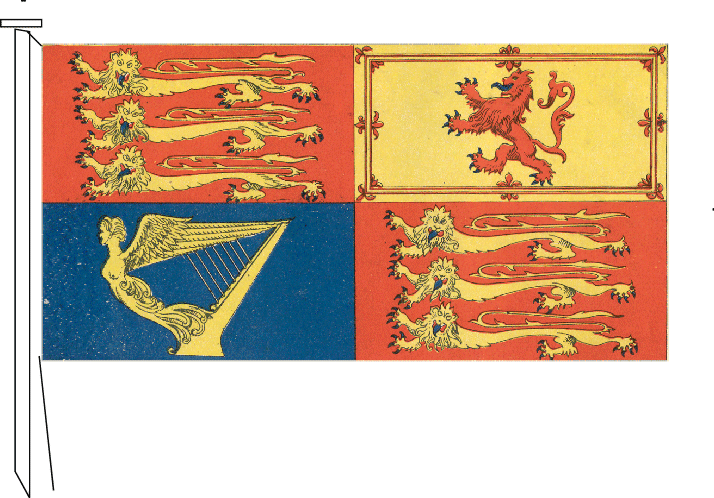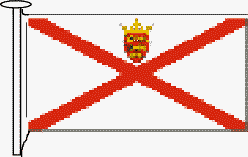FLAGS OF THE BRITISH ISLES
The emblems used on the UK's national flags appear to have evolved via religious preference with the crosses of St George, St. Andrew and St Patrick becoming established in the 16th century. Fuller information on the history of flags can be obtained from: Flags of the World. Pursuant to the uniting of England and Scotland the conjoined crosses of St. George and St. Andrew was approved as the Union flag in 1707 the result was the flag on the right.



In 1800 changes to the Union flag incorporated the cross of St. Patrick. Note the different sizes of the blue areas and the displacements in each quadrant of the St. Patrick cross. The arrangement makes it possible to unwittingly mount the flag upside down. Historically England and Wales have been considered as one nation but the princeapality uses a griffin on a green and white backgroud as a flag of its own. The Royal Standard is the personal flag of the sovereign and is only hoisted when the monarch is present.




Other provinces in the British Isles also have individual flags. The current official flag for Northern Ireland is the Union Flag and below are those, in the order shown, for Cornwall, Isle of Man, The Shelands and the Orkney Islelands.
The Channel Islands also sport flags of their own, below are those for Sark, Hern, Jersey and Guernsey:







Lord Nelson commanded that all ships of the fleet fly the White Ensign; before this time squadrons flew different emblems making recognition difficult in battle. Now all HM ships of war in commission fly the White Ensign. British merchant ships commanded by officers of the RN reserve fly the Blue Ensign and all other ships belonging to HM subjects fly the Red Ensign. All three include the Union Flag in the top quadrant adjacent to the mast. When in harbour a smaller replica known as a jack is hoisted at the bow of a vessel to indicate that vessel's nationality. This probably accounts for the expression Union Jack being incorrectly applied to all Union flags.



